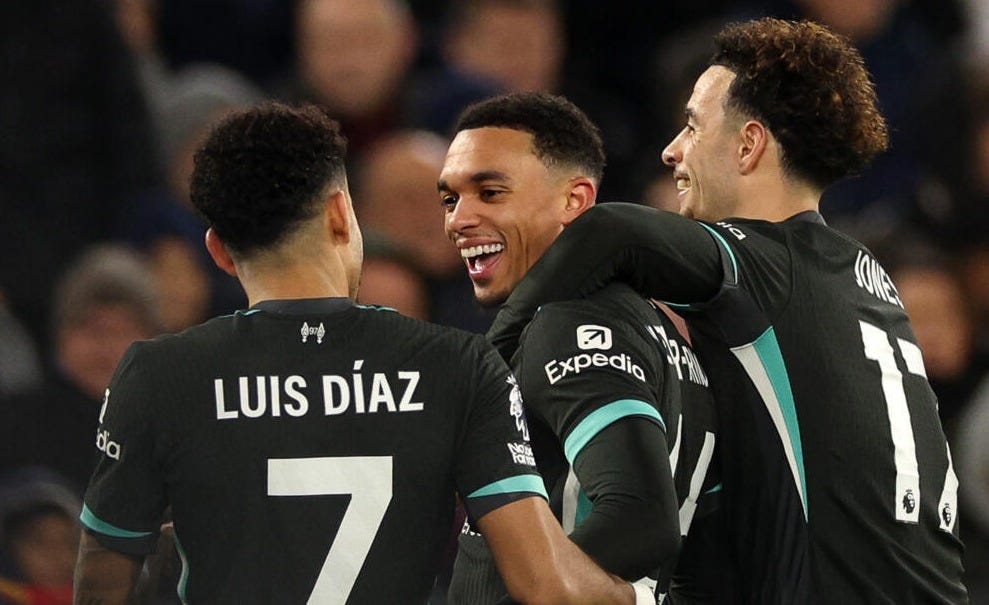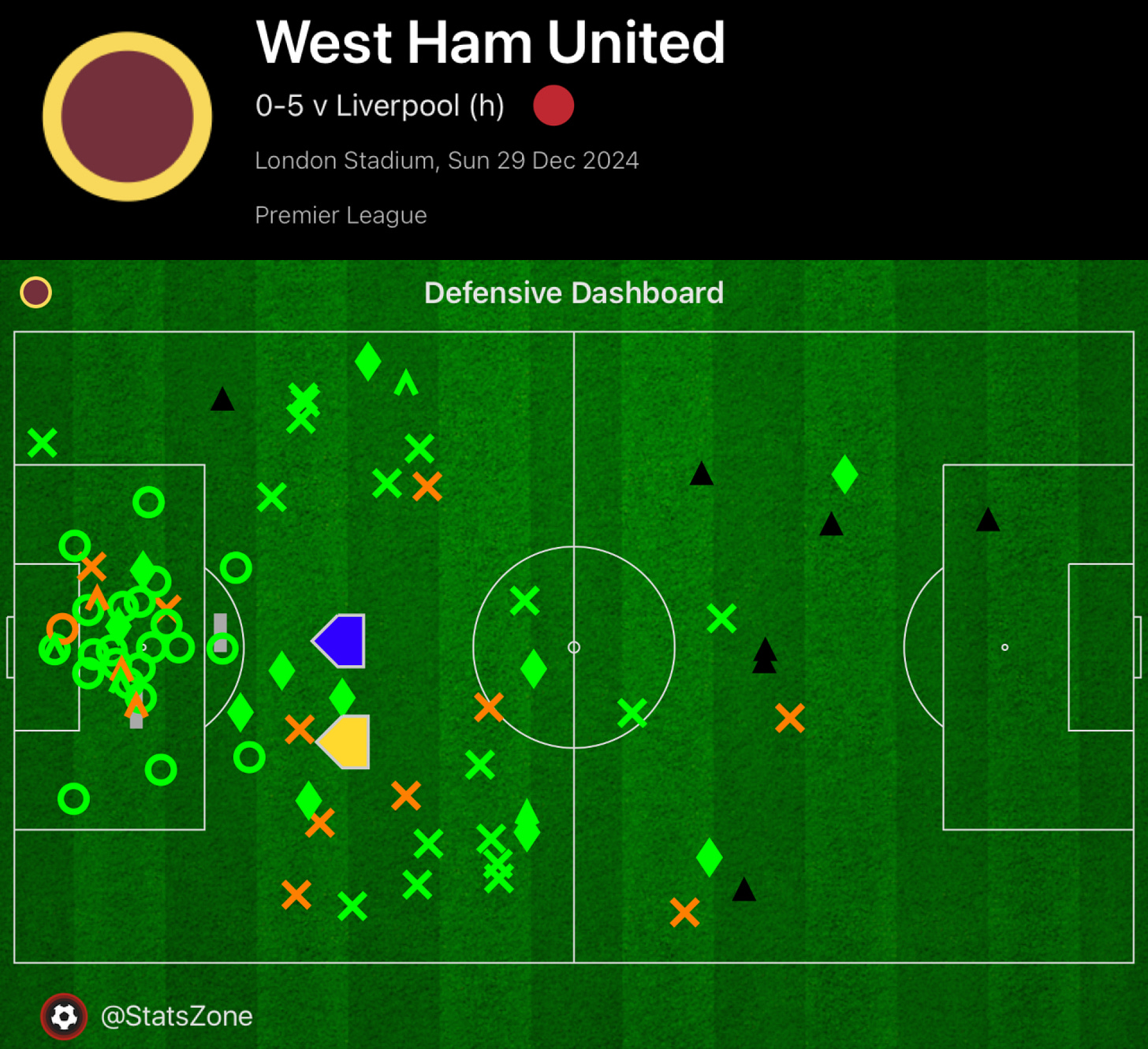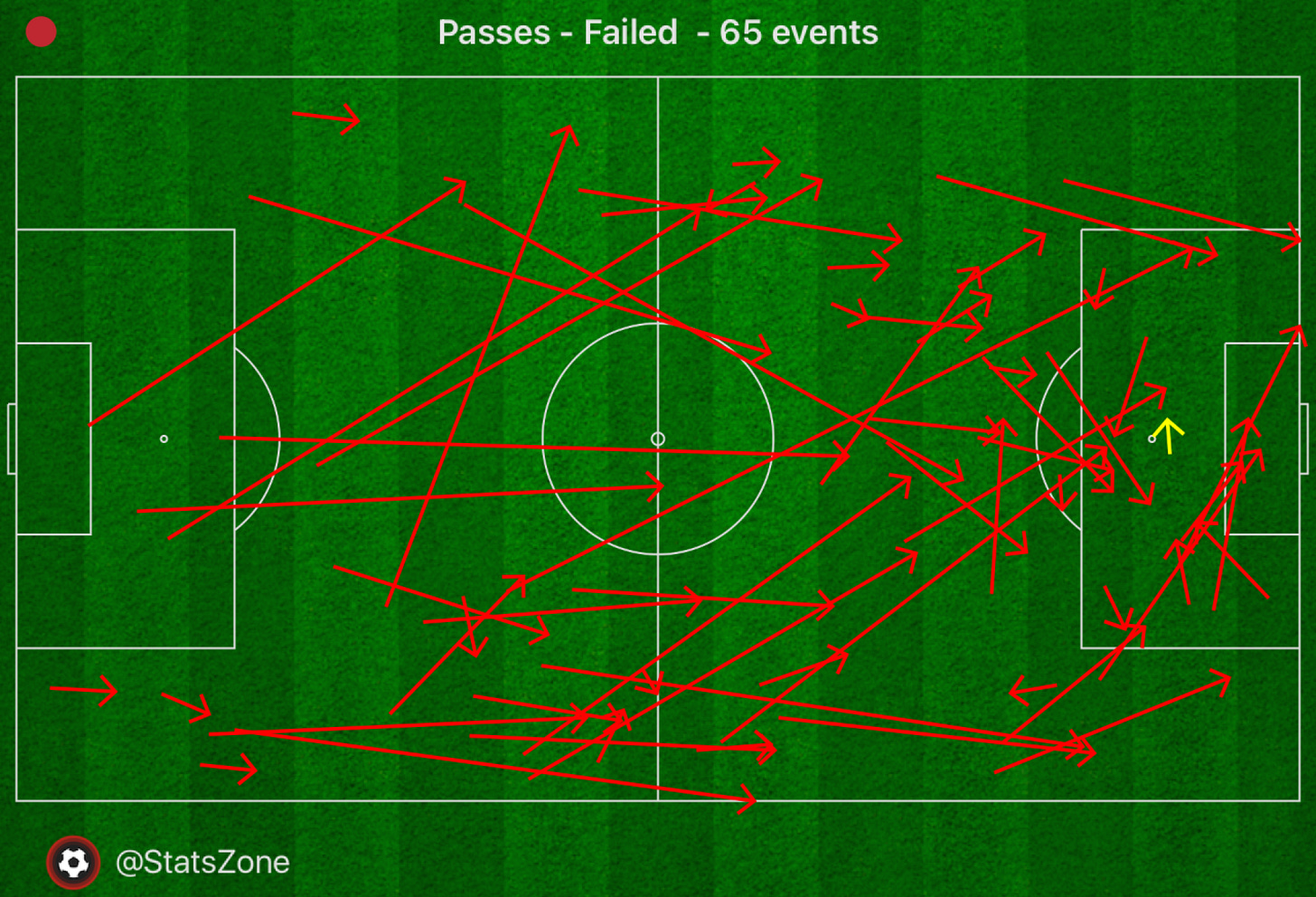Stat of the Match: West Ham 0-5 Liverpool
West Ham allowed Liverpool to play as they wished on Sunday. A passing stat illustrates why they were handed a 5-0 thrashing for their trouble.
Liverpool raised the scoreboard pressure on the chasing pack in the Premier League title race by thumping West Ham 5-0 on Sunday. Their performance was so dominant, it was effectively a four-point win.
Well, not exactly. The ghost of Jimmy Hill has not yet shaken up the rules that severely.
But if you predict the results for the rest of the season using expected goal data, an exceptional performance in this metric tips the future odds in a club’s favour. A team becomes likelier to win any match they play, pushing their final expected points tally higher.
The average away side in 2024/25 loses the xG score line by about 0.2; Liverpool won it by 2.8 at the London Stadium, following a 4.3 margin at Tottenham the previous weekend. Putting two of the top five xG difference away performances of the season on the board in the space of eight days hugely strengthens the probability of future wins in a prediction model.
Before the West Ham game, Arne Slot’s men were forecasted to finish the campaign with 86 points. After it, they had risen to 87. That’s how the win was in one strange sense worth four points.
Full article on the predicted table to come next week
The improved goal difference doesn’t hurt either. But how were Liverpool able to be so dominant, so controlling, away from home with a relatively low 54 per cent possession? They did it by delivering the exact type of performance which Slot craves.
The head coach was asked about how much he enjoyed his side’s efforts on Sky Sports after the game. “A lot, because it doesn’t happen many times that I could just sit back and enjoy.” Similarly, Slot described the performance as “the way I would like to see us play an away game” in his post-match press conference.
As someone who wants to see his team “kill them [the opposition] with passes”, the Dutchman could ask for few better opponents. Among the 25 grounds Liverpool have visited more than once since the summer of 2017, only at Villa Park have they completed a higher percentage of their league passes than they have at the London Stadium.
No matter whether Slaven Bilić, Manuel Pellegrini, David Moyes or Julen Lopetegui has had their hand on the Hammers’ tiller, the Reds have been able to retain the ball relatively easily. West Ham made just two tackles and two interceptions in the Reds’ half on Sunday, just one of each after the fifth minute.
Fouls (the black triangles on the above pitch map) notwithstanding, West Ham offered little resistance to the right side of Liverpool’s team until they were in their half, close to the defensive third. With the quality Slot deploys on that flank, it was not a recipe for success for the Hammers.
Nonetheless, it was striking how rarely the Reds lost possession in their own half. The below chart shows their unsuccessful passes, with just 12 landing short of the half way line.
Trent Alexander-Arnold was responsible for five of them, Mohamed Salah two, with Alisson Becker, Joe Gomez, Curtis Jones, Alexis Mac Allister and Kostas Tsimikas logging one apiece. Huge credit has to go to Jarell Quansah, who came on unexpectedly in the first half yet showed sufficient composure to complete all 45 passes he attempted.
The platform of close-to-perfect ball retention in their own half ensured the visitors faced little West Ham offence in the opposite direction. It also enabled Liverpool to complete 63 passes into the final third, their 14th most in their last 142 away league games. In the 13 matches in which the Reds logged more, they had an average of 69.7 per cent possession and never less than 62, comfortably ahead of what they had here.
Opta assesses the value of a team’s passing via their expected assists (xA) model. This term has been used in the past to describe the xG value of chances created, so perhaps a renaming is in order. Anyway, it’s described on FBRef as: “the likelihood each completed pass becomes a goal assist, given the pass type, phase of play, location and distance.” As a very simple example, a pass completed in a team’s penalty area will carry minimal value, while one in their opponent’s box will obviously be far likelier to result in a goal.
Liverpool and West Ham had xA figures of 1.5 and 0.4 respectively in this match, but what do these numbers really mean? For the Reds, both were improvements on their season-long averages of 1.43 for and 0.61 against per match, so there’s a tick for their efforts.
The numbers still lack context though. If we scroll back through the last seven seasons, we find only nine Premier League sides who bettered the current Liverpool’s xA difference per game of +0.82. You can guess who they were.
Oh, look, it’s Manchester City with a splash of Liverpool and Arsenal. No team who controlled the passing to the extent the Reds are doing this season got fewer than 81 points or finished lower than second. Six of the nine broke the 90-point barrier, which Slot’s Reds are also on course to do based on their points-per-game average.
Lopetegui tried to keep Liverpool at bay by switching to a 5-4-1 formation at half time. It made little difference, with the Reds recording five shots on target, three big chances and two goals after the break.
If teams are going to frequently allow the Premier League leaders to get into their half before trying to stop them, well, all the best. Liverpool’s controlled yet penetrative passing can puncture any back line this season.









Huh. Interesting. My very casual survey of most of the numbers led to a conclusion that the Hammers had continued to contest the match because of one thing that stuck out: the duels. We kept a relatively narrow margin (winning 40-34 on the ground and 7-6 in the air) which seemed to reflect their willingness to stay in the game, rather than go into a shell, despite being (ahem) hammered in most other aspects. There was no doubt whatsoever who the victor was, "eye test" and otherwise, but that one number that Arne has cited as valuing seemed to indicate that they were still interested. Perhaps not.
Happy new year, Andrew. I wish you all the best in 2025.
Do you know whether we run more or less under Slot and how LFC compares to the other teams this season?